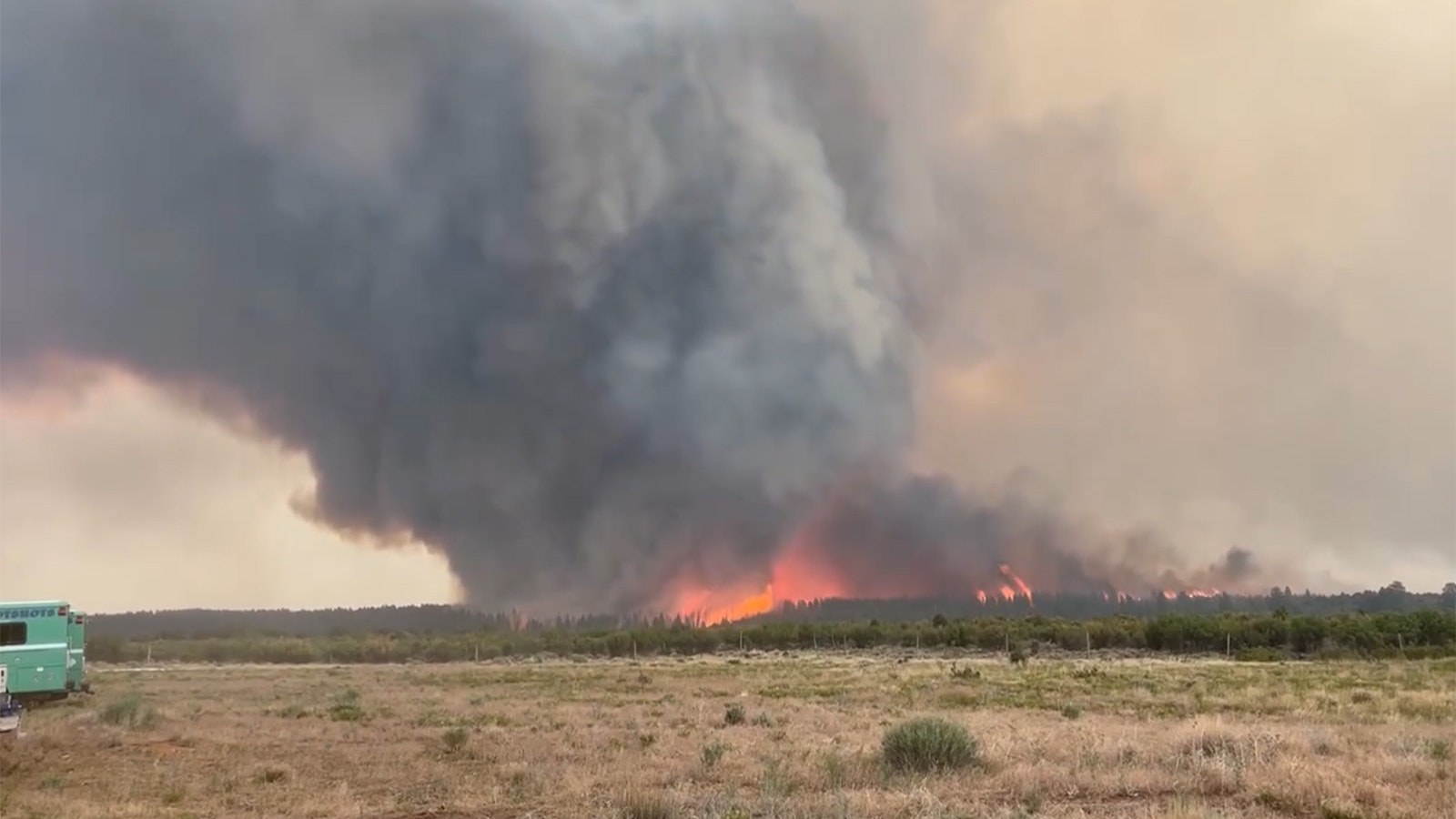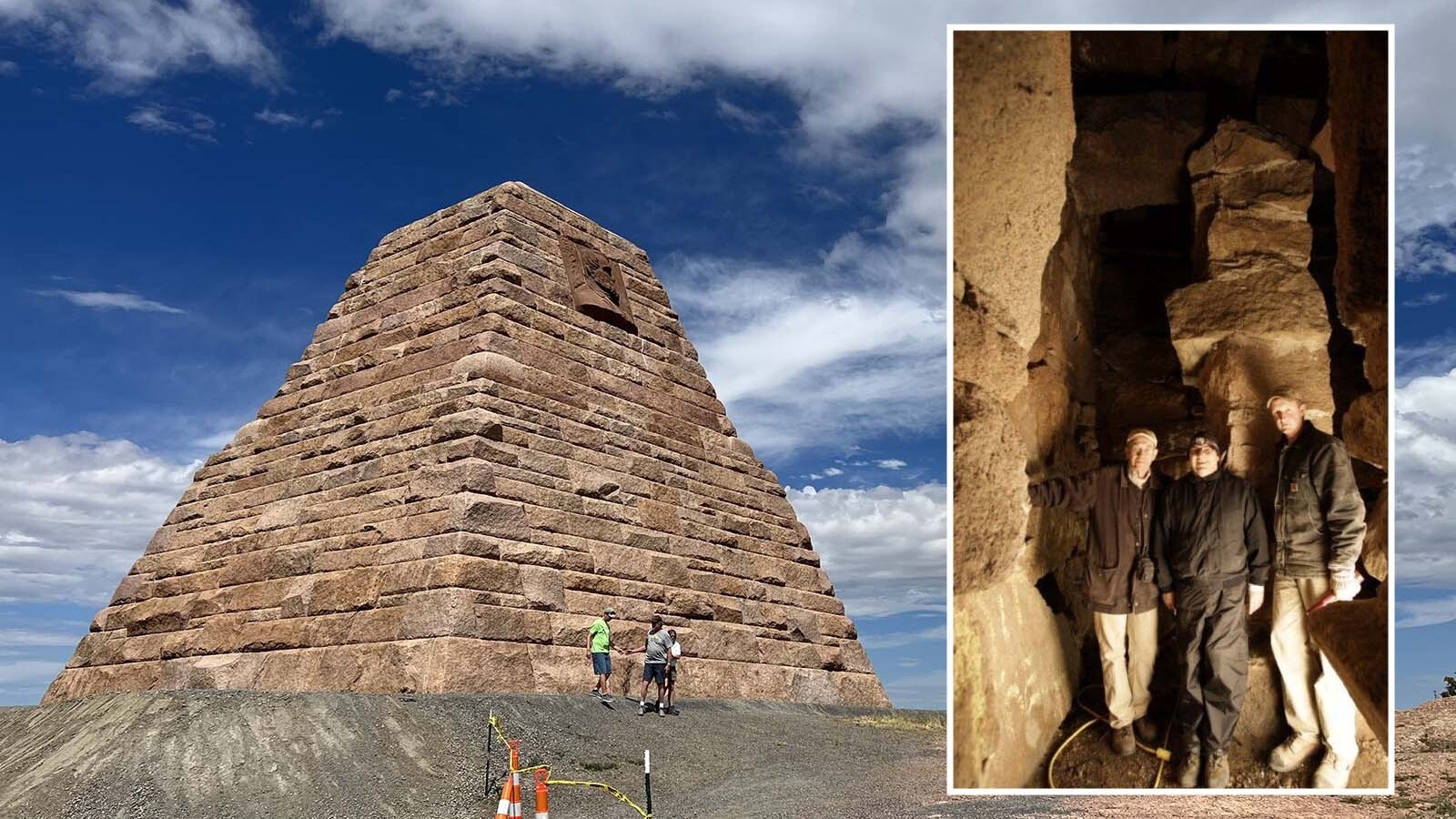An assortment of balloons has been flying over all our heads long before the United States shot down the Chinese spy balloon, which has gone viral on social media.
In fact, thousands of balloons are launched every day around the globe, scientists and meteorologists tell Cowboy State Daily, and it’s a trend that has been growing, thanks to better materials for making balloons and increasingly smaller electronic gadgets.
Think GoPro on a balloon, and suddenly it’s a cheap way to take high-resolution images. But other lightweight gadgets also can go on balloons to track infrared signals or gather other types of signals.
“There are more things flying high altitude-wise using balloons as the lifting mechanism, if you want to call it that, than people think,” Meteorologist Don Day told Cowboy State Daily. “In my opinion, they could be shooting stuff down every day if they’re out looking for them.”
Day is Cowboy State Daily’s meteorologist, and also is frequently consulted on balloon-related topics.
He helped magician David Blaine with his “Up” stunt a couple of years ago, where the illusionist flew at 24,900 feet in the air using nothing more than a bunch of colorful balloons.
Balloon Party In The Sky
The most common balloons in the big sky party are weather balloons.
“(Weather) balloons go up around the world twice a day to measure the atmosphere,” Day said. “And to gather the data that weather forecasters need to make weather predictions.”
The National Weather Service releases two balloons daily from 900 locations around the United States and the globe.
In Wyoming, University of Wyoming Emeritus Professor Terry Deshler told Cowboy State Daily that location is in Riverton.
Like other weather balloons, the balloons released in Riverton increase in size as they rise until they reach an altitude of about 100,000 feet. At that point, it can’t stay together any longer and will burst into a million tiny little pieces.
There’s a safety aspect to that design so there’s no appreciable debris that would harm anyone below.
The weather balloon’s payload is generally a package of very light instruments that measure wind speed and direction, humidity, temperature and other factors that feed into weather forecasts that are generated throughout the day on a regular basis.
The payload usually includes a radio transmitter so that once it floats back to earth it can be easily found.
“This happens every day, and it happens around the world,” Day said.
More Than Weather Balloons
But researchers and scientists also use balloons of a different, more durable variety on a regular basis.
Deshler, a researcher in Colorado and an emeritus professor for UW, is in that category.
Those balloons are generally plastic, Deshler said, and are quite a bit larger. They’re not designed to burst; rather, they’re filled with a lightweight gas like hydrogen or helium.
The amount of gas in the balloon will determine the altitude it ultimately achieves. Balloons of this type can lift much heavier payloads and are generally much larger. They are usually easily visible, too.
In fact, Cowboy State Daily did a story on such a balloon last July. The strange object in the sky that caught the attention of many Laramie residents turned out to be owned by World View Enterprises, a “space tourism” company doing business as World View.
The company advertises stratospheric trips from such scenic locations as Grand Canyon and the Great Barrier Reef in Australia, to name a few.
Three More Shot Down
Deshler doesn’t believe, however, that media reports on three unidentified objects that were shot down in the waters of Alaska, the Yukon Territory in Canada, and over Lake Huron recently will turn out to be scientific vessels.
He said that most of the time, scientific vessels doing substantive research would have a payload greater than 6 pounds, which would require them to notify the FAA and carry a transponder.
However, he acknowledged that he, and many other scientists, are constantly working to reduce the size and weight of instrumentation in hopes of one day avoiding that necessity.
Increased Miniaturization
Two trends are increasing the number of balloons overhead in the sky.
One is miniaturization. Electronic components are getting smaller and smaller, but the tasks they can accomplish are growing.
The second trend is better, more durable, lighter-weight balloon materials.
It’s easy to put a balloon in the sky that can do the same things a satellite would do, Day told Cowboy State Daily.
“There’s a really big interest in what I call stratospheric platforms, which is to use a balloon or some type of structure to get high into the stratosphere,” he said. “There are certain layers of the stratosphere that have very light winds and you can have a balloon be over an area for quite a long time, sometimes, depending on altitude.
“The best way to describe (that) is it’s a cheap satellite.”
Since no fuel is required to actually launch the object into space, the satellite capabilities come at a fraction of the usual cost.
“There’s several private companies, not only (in the) United States, but around the world, that are flying high-altitude stratospheric balloons for a variety of different clients,” he said. “A lot of times it’s for high-resolution photography, remote sensing.”
Most of those types of balloons are large and their payloads heavy enough to fall under FAA regulations, Day said. Some can float payloads of up to 3,000 pound or more, depending on the balloon’s size.

Much More Than Snapshots
Day doesn’t believe the main purpose of the Chinese spy balloon will turn out to be taking snapshots over sensitive military bases.
“You can go on Google Earth and find missile sites,” he said. “It’s not hard.”
What he thinks is more likely is that the Chinese were gathering radio frequency or other types of data that would be difficult for a satellite, which has to contend with miles and miles of atmosphere, to do.
“You can do a lot, whether you’ve got listening devices to pick up radio signal frequencies or whether it’s camera systems, infrared, whatever,” Day said.
Not only that, but using the right system, a balloon is more maneuverable than a satellite. Its altitude can be adjusted to take advantage of wind currents and travel to new locations.
A satellite is tied to a particular orbit, and changing that is more difficult.
“Satellites are only going to see a certain part of the earth certain times of the day,” Day said. “You can use a balloon to maybe do things that the satellite is not designed to do.
“So, it’s a very sneaky way to gather intelligence very inexpensively, if you were to compare it to how much it costs to put a satellite in orbit.”
Balloons can also be transmitting data to a satellite, which then relays it home, Day said, meaning the spy balloon didn’t necessarily need to be recovered by the Chinese to accomplish its purpose.
Under 6 Pounds
But a good many balloons have payloads weighing less than 6 pounds, and in that case operators are not required to tell anyone about their activities, Day said.
“You could, if you wanted to, get a bunch of helium and a balloon and put a string on it to float a stuffed animal,” he said. “There’s nothing that stops you.”
That means there could be a lot of smaller, lighter unidentified objects floating overhead that could look like or be anything.
While the Chinese balloon was a well-constructed, well-designed reconnaissance platform that is likely part of a larger spying program (given that similar balloons were cited over Costa Rica) Day said the unidentified objects recently shot down sound to him like it could be research or even hobbyist material that’s floating around, based on the altitudes involved.
“Some very expensive missiles have been used to shoot something down that maybe cost someone less than $100 to launch,” Day said. “That’s in the realm of being a possible thing.”
Shooting Down Balloons Illegal Unless You’re The Military
While many Wyomingites expressed interest on Facebook and in media reports in shooting down the Chinese spy balloon when it floated over Crook County, Day offers a cautionary note about that.
“It’s against the law to shoot at any aircraft,” he said. “You know, No. 1, it’s not smart and No. 2, your bullets aren’t even going to get there. And if they do, they’ll be at a velocity that isn’t going to do very much.”
Bullets that go up still have to come down, Day also pointed out, which means there’s potential to hit something. Even if it’s not a person, a bullet could damage property, kill someone’s pet, hit a wild animal or kill someone.
“I know at the end of the Iraq war, people were shooting machine guns off in the air and people were killed on the ground from bullets falling,” Day said.
While a missile can be effective to rapidly bring down a balloon, bullet holes are not very effective. They make a small hole compared to a balloon’s size. The air inside is at a low pressure as well, so it gets trapped by the surrounding, higher-pressure air. The physics involved keeps that low pressure air trapped inside the balloon despite the holes.
“You just get a leaky balloon,” Day said. “The balloon would come down, but not right away. A sidewinder missile is kind of overkill, but, you know, that was pretty effective.”
Changed Protocols Likely
Balloons have been used often over the years for military purposes, so that’s not a new concept.
The Japanese “sent roughly 9,000 balloons at the end of the war from Japan across the Pacific,” Day said.
Those were equipped with bombs to try to cause damage and start wildfires. They succeeded in killing a family in Oregon, and causing other property damage.
“Those flew lower at, like, 30,000 feet to 35,000 feet, as opposed to these other ones flying higher into the stratosphere,” Day said.
The United States also launched spy balloons during the heat of the Cold War to spy on Russia.
With increased miniaturization of electronics and better, more capable balloons, Day believes it’s likely there will be new protocols for balloon flights in the wake of the Chinese spy scandal.
“If I were to predict what is likely to happen, I think that the government is going learn that there’re are more of these balloons floating high in the atmosphere around the globe all the time,” he said. “Cataloging the different types will help them understand what constitutes possibly a threat and what doesn’t.”
New protocols for the military wouldn’t surprise Tucker Fagan, who is a retired base commander for FE Warren Air Force Base in Cheyenne.
“We do that all the time right?” He said. “We’re always learning from each other and looking at what we’re doing. Does that counter that? Does that keep us in a stable environment? And that’s really what you’re after, a stable environment.”





